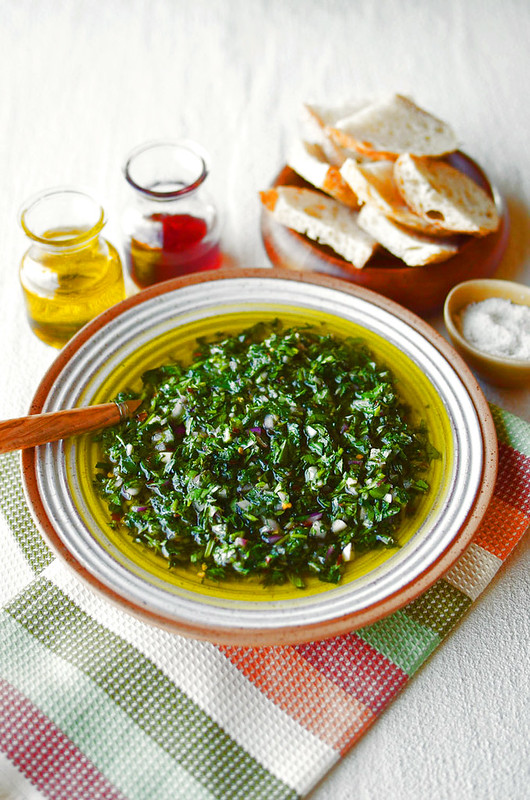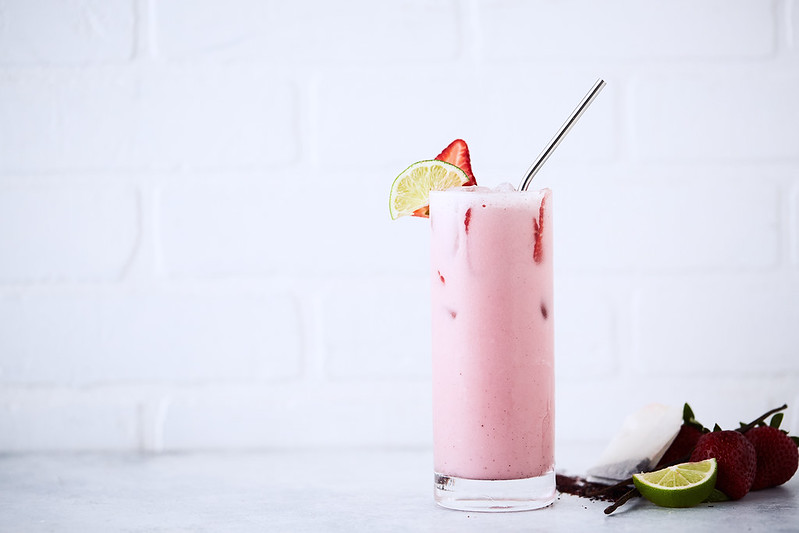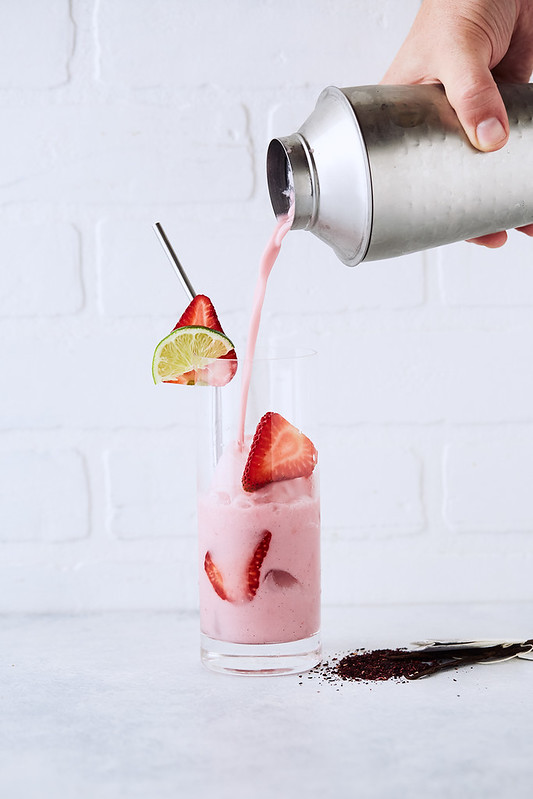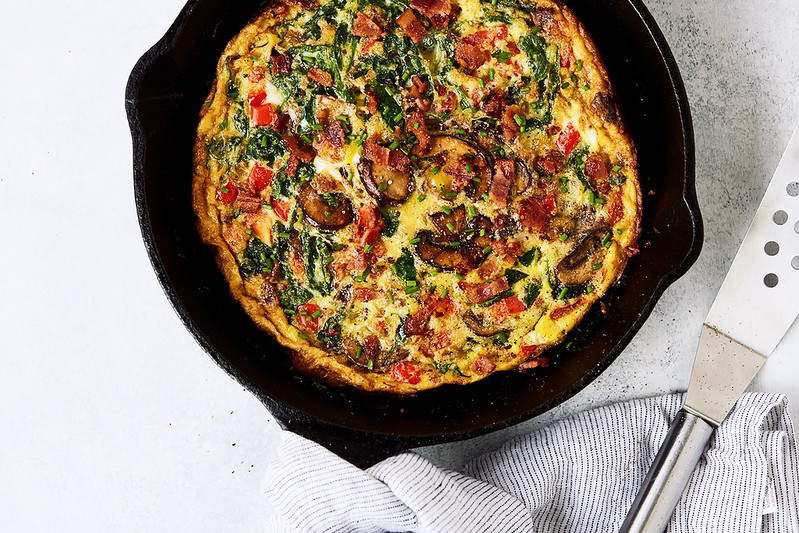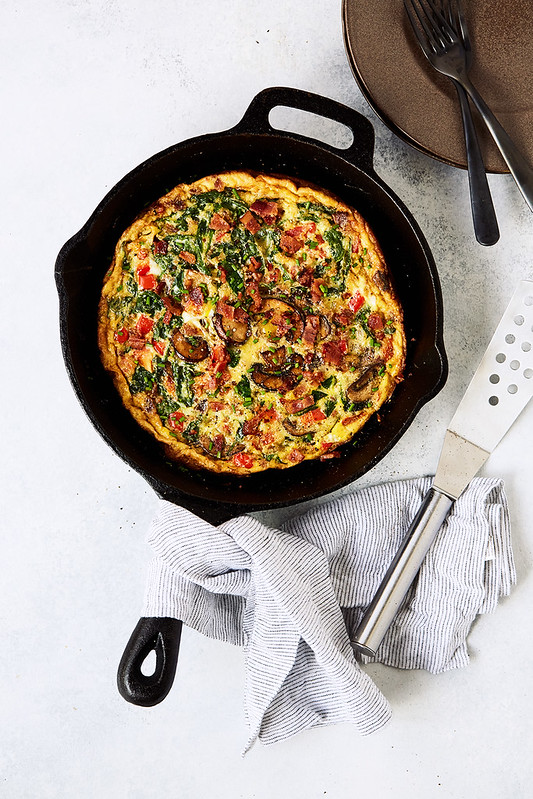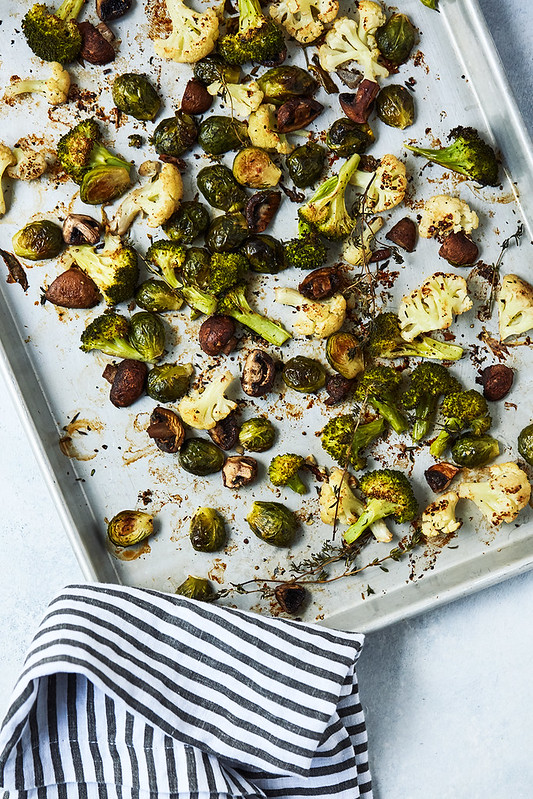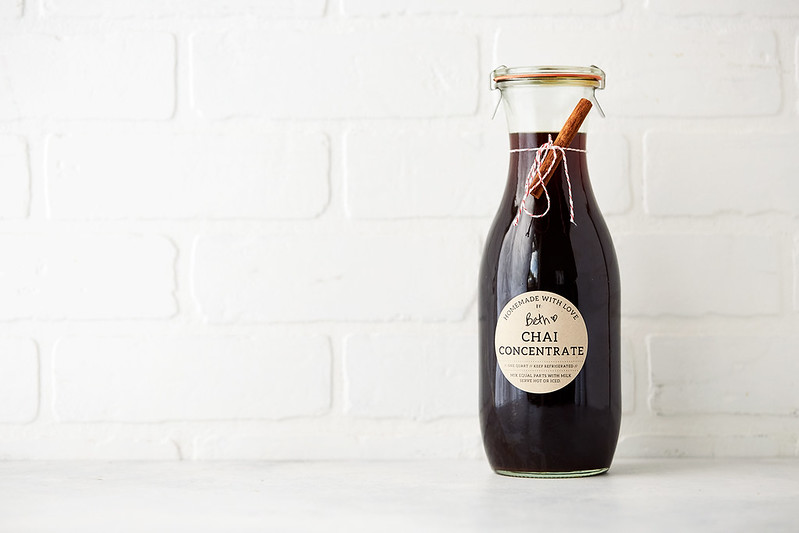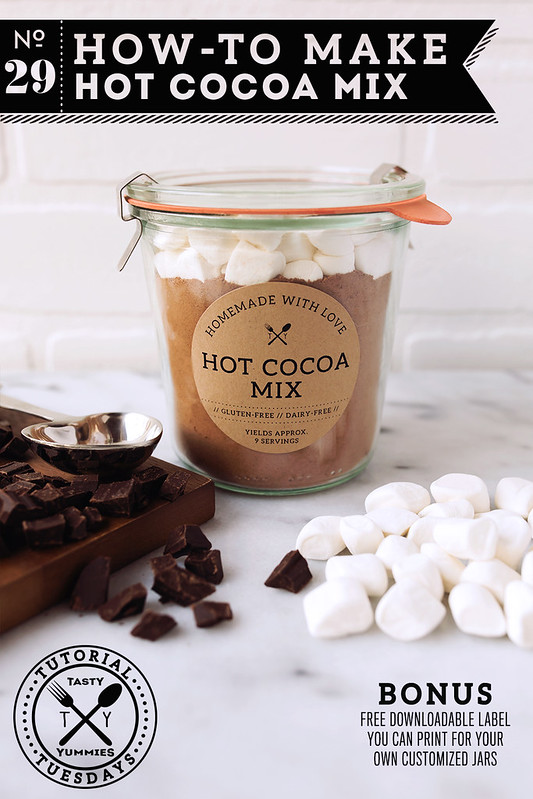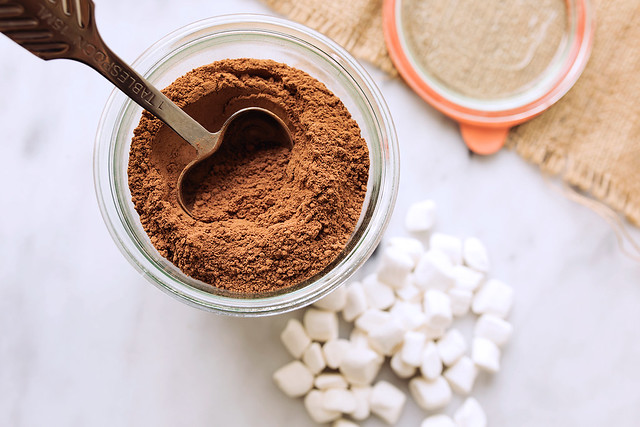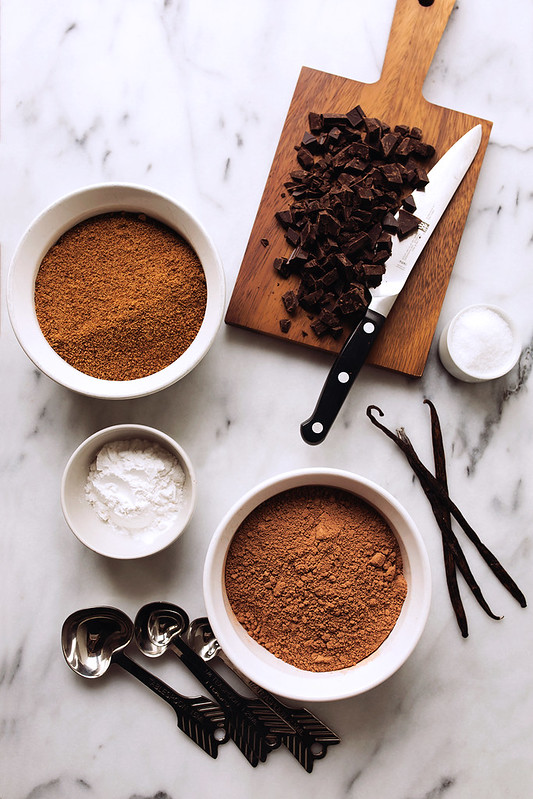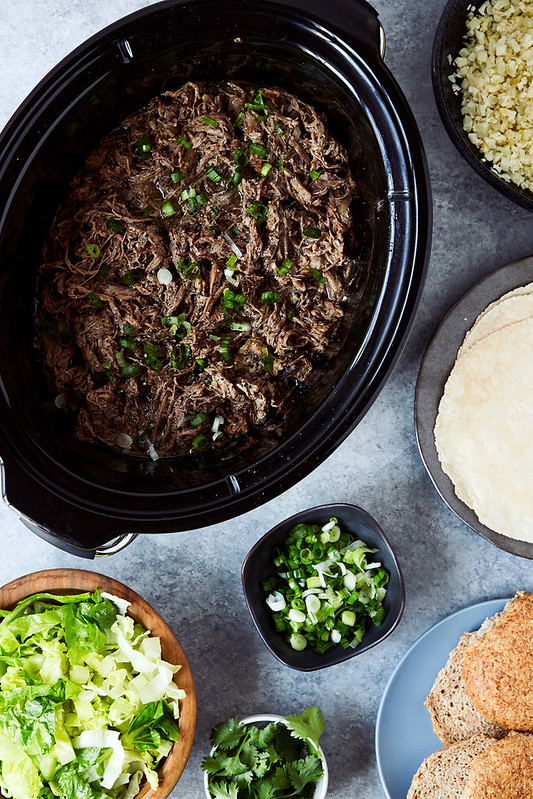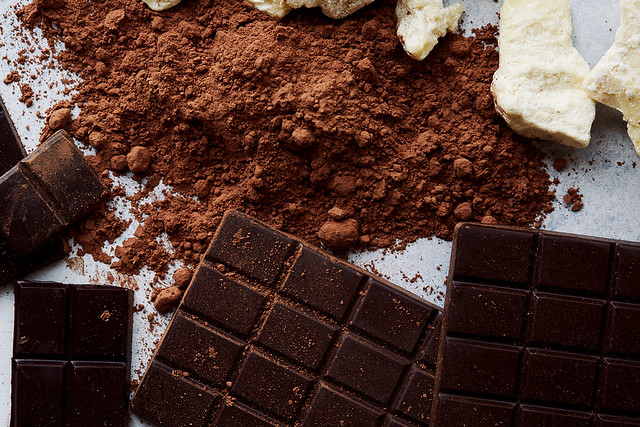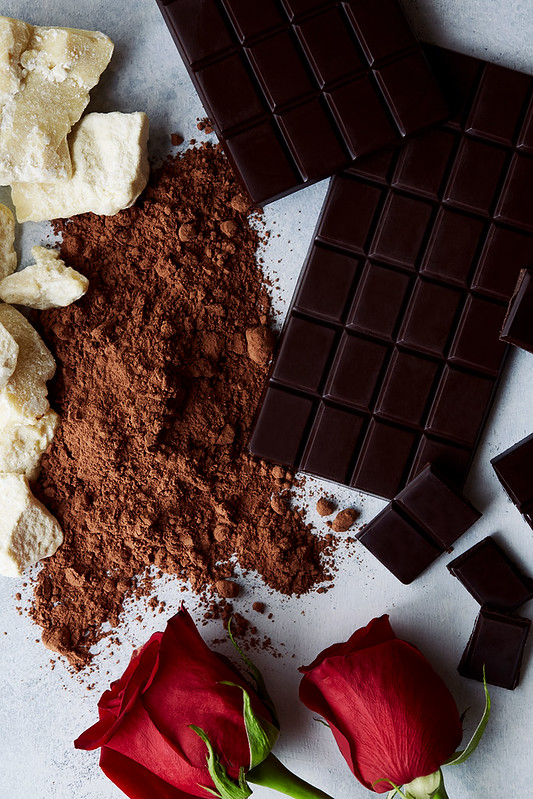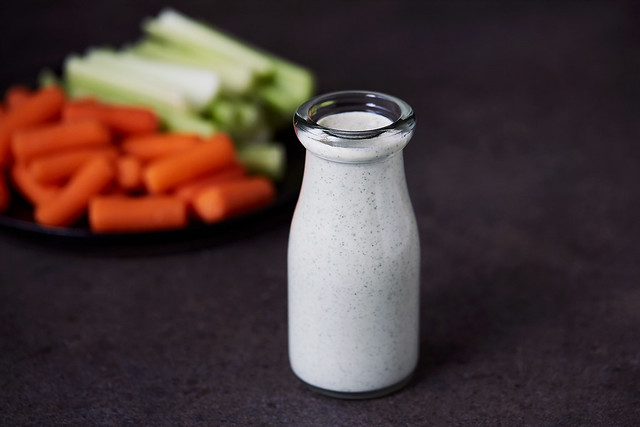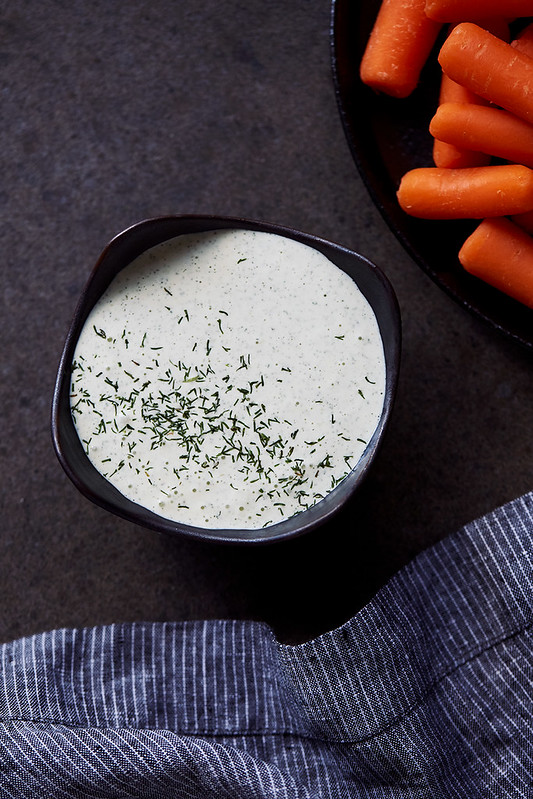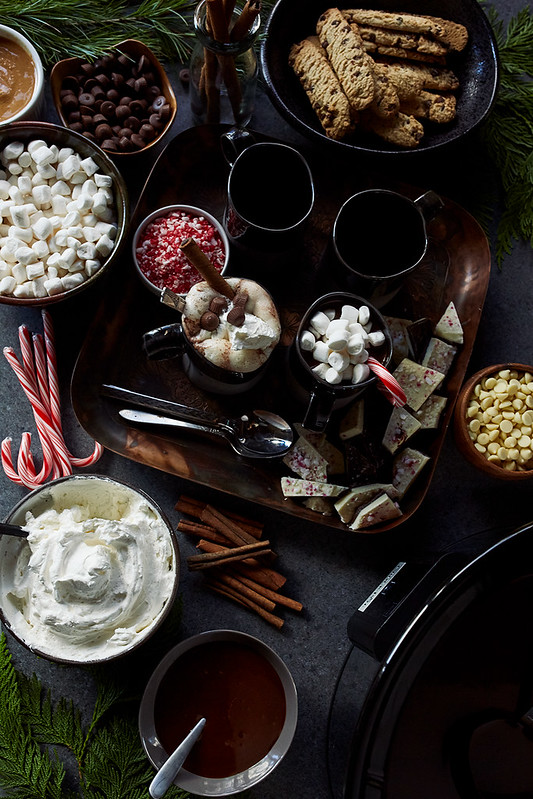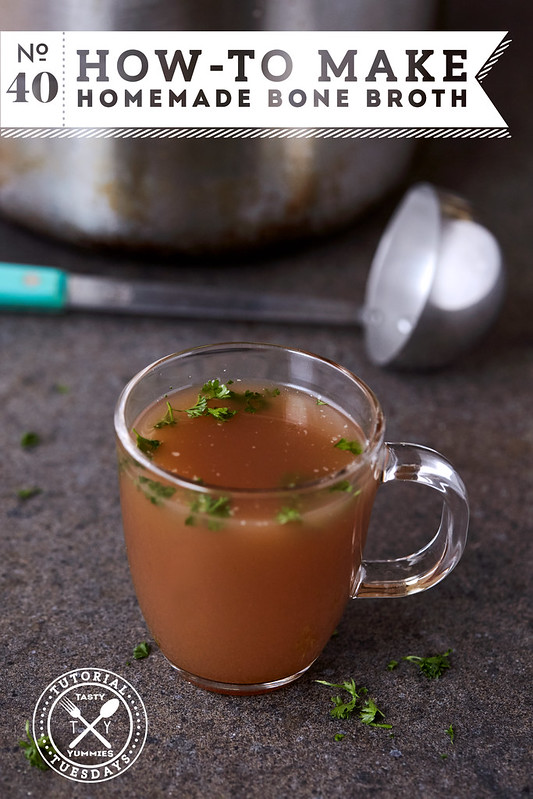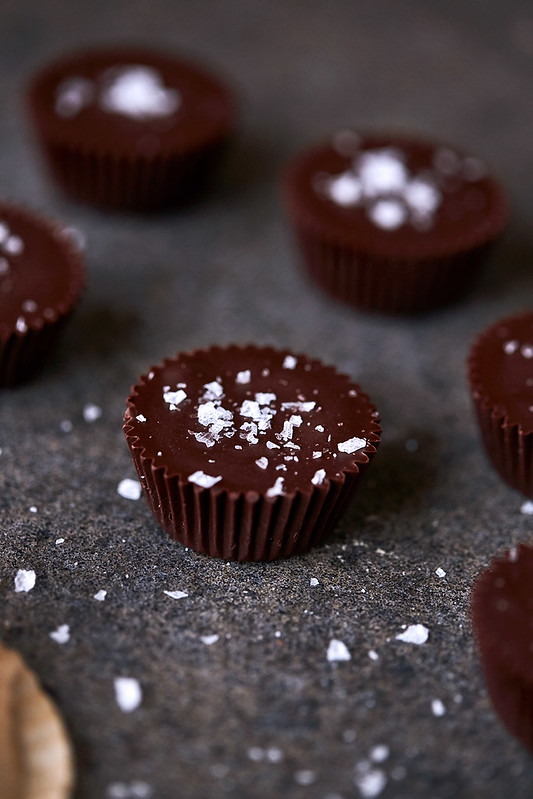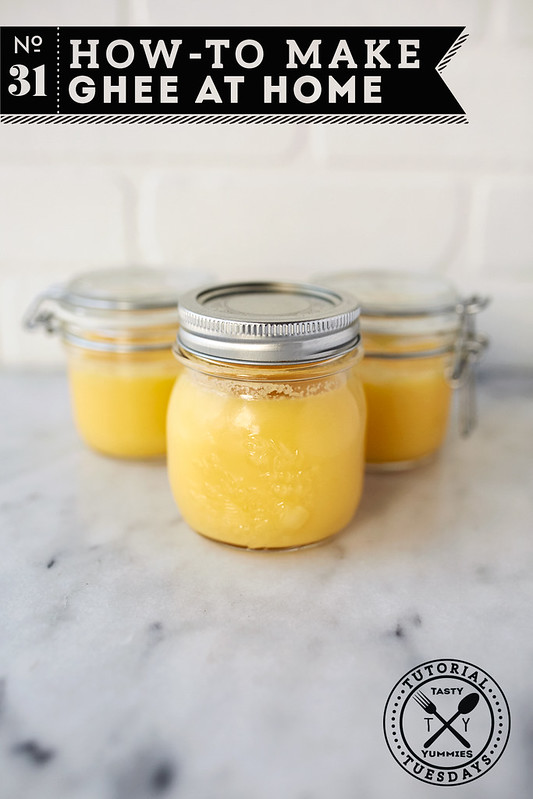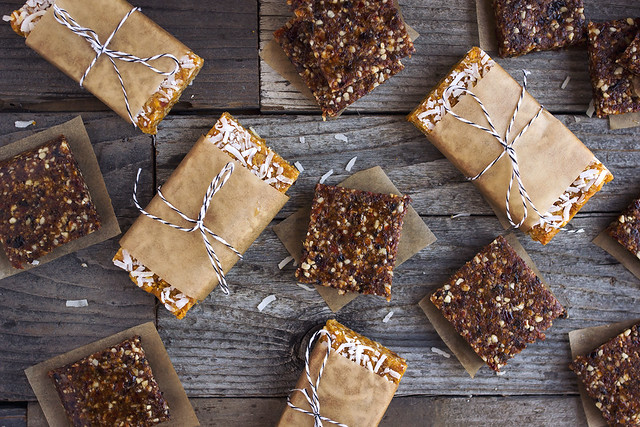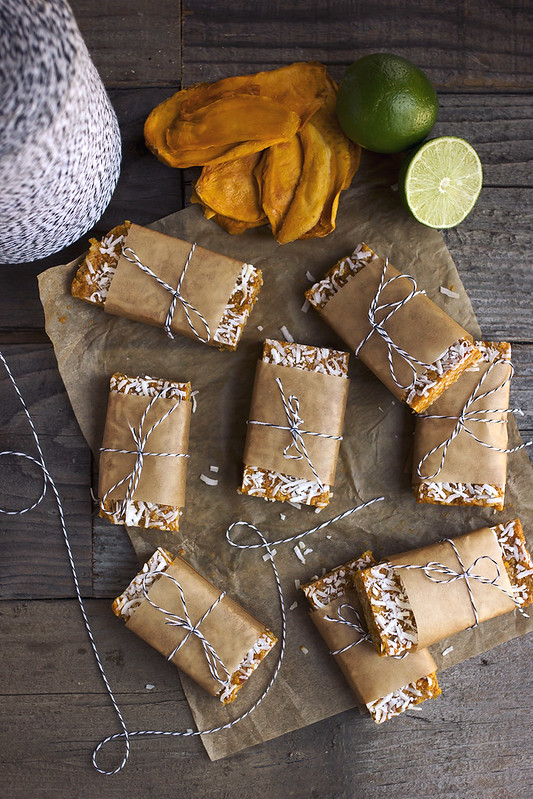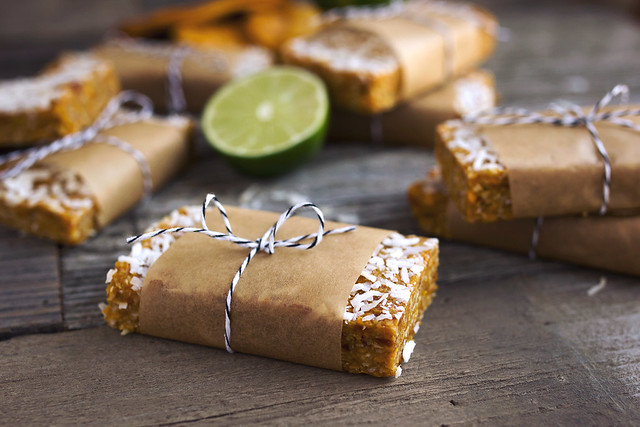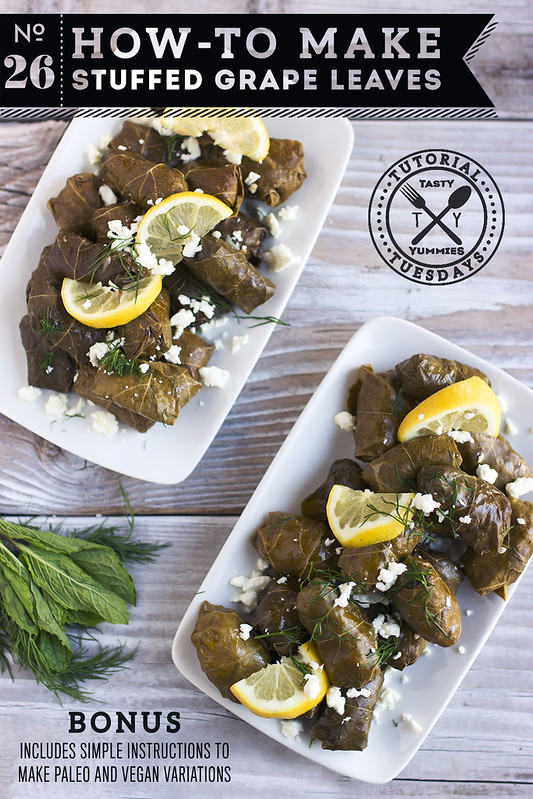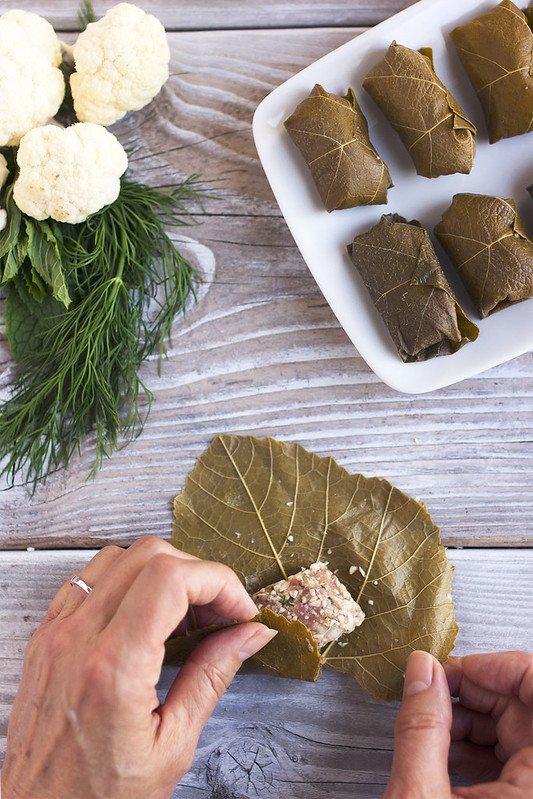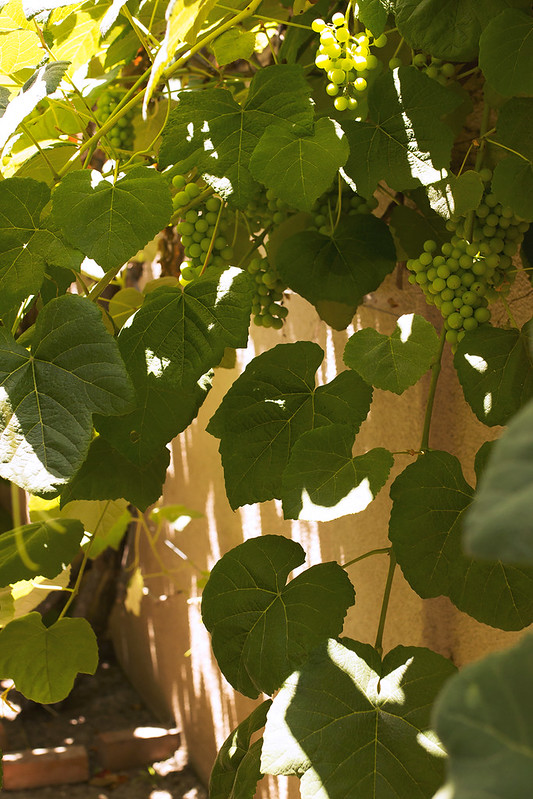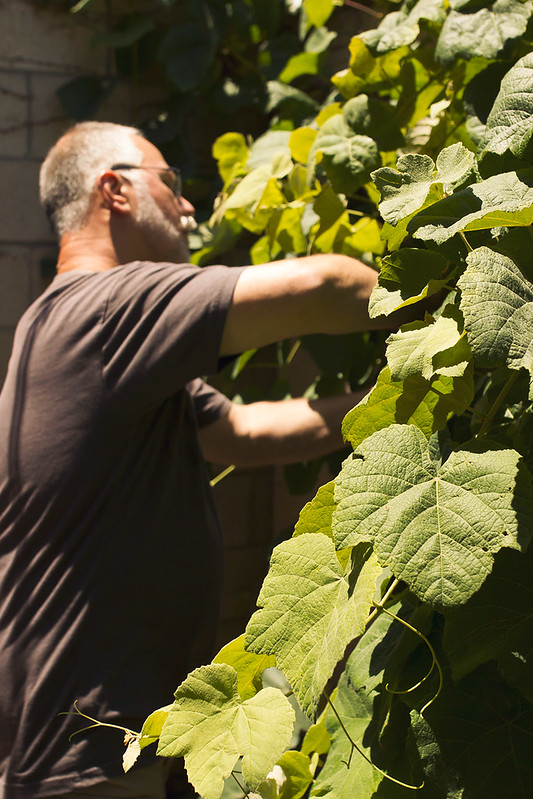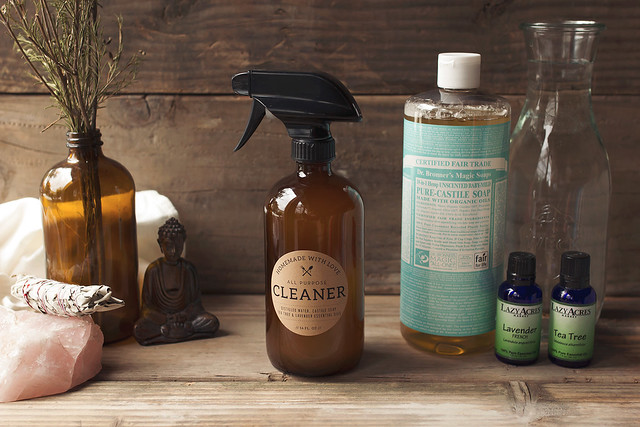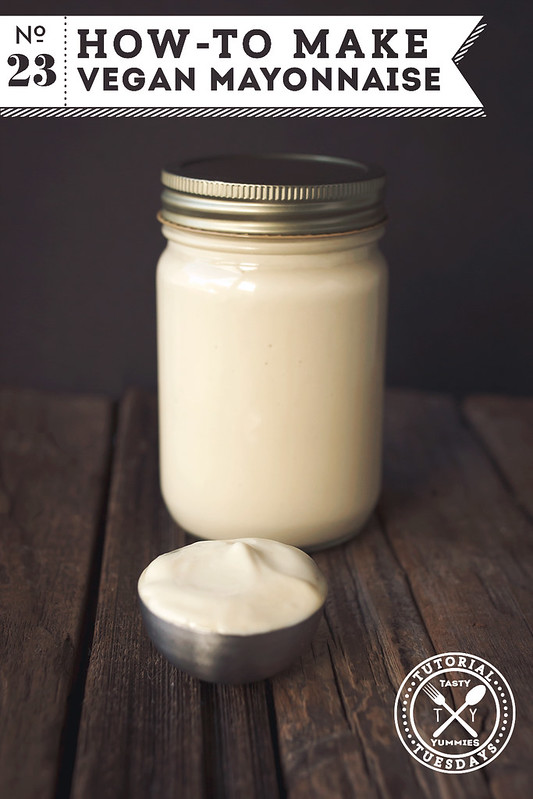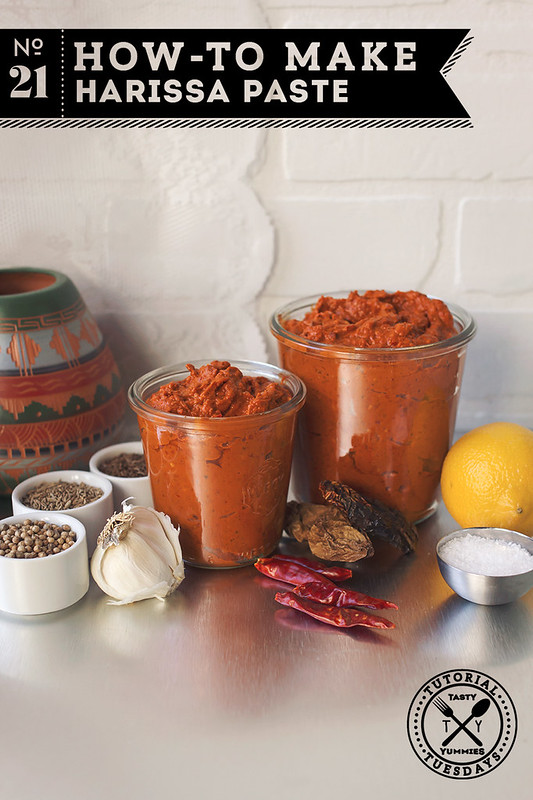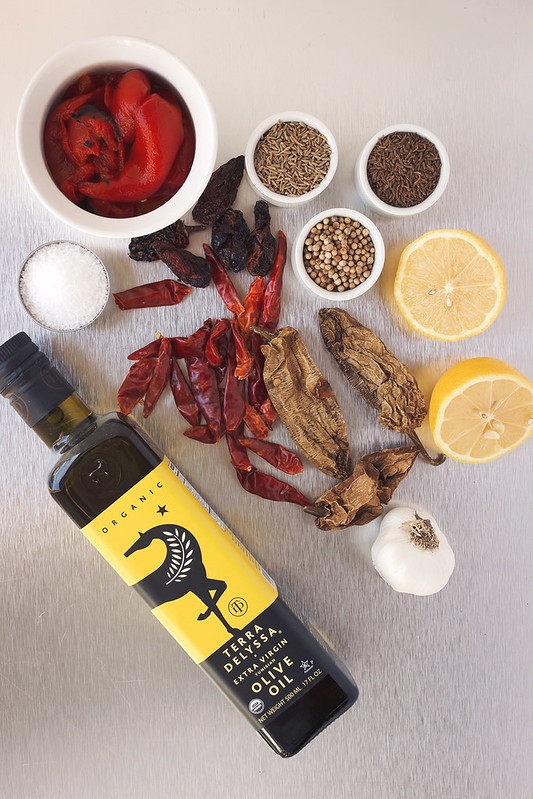-
Chimichurri Sauce Recipe
What exactly is Chimichurri? Chimichurri sauce is an Argentinean condiment, similar to pesto, a sauce that is popular throughout South America. The flavor variations are endless and all the possible uses are as well. Learn how to make this basic version of Chimichurri Sauce plus all the ways you can use it.
Sauces are my love language. How can you not love a fresh, savory, fragrant homemade sauce? Chimichurri is one of those sauces that I constantly have in rotation during the warmer months. Chimichurri can take a steak, grilled chicken, grilled shrimp, an arepa sandwich to the next level! I kid you not, this sauce is almost drinkable in my opinion. The fresh herbs also have your kitchen smelling like an outdoor restaurant. This is truly a recipe that once you make, you will always come back to.
So I know in a lot of our recipes we say if you don’t have fresh herbs you can substitute dried herbs….well in this recipe you need to use fresh herbs. It’s what makes chimichurri, chimichurri. Plus it’s also a fun word to say.
Chimichurri is made a variety of ways, cilantro isn’t always included but we find it’s a really nice addition. If you are one of the folks who doesn’t love cilantro, no worries, leave it out and add additional parsley.
-
Easy No-Strain Cashew Milk {+ Video} + bonus flavor ideas
Are you curious how-to make delicious cashew milk? While nut milks and other non-dairy milks can seem intimidating and like far more work than they are worth, this definitely doesn’t apply to my Easy No-Strain Cashew Milk. Just two ingredients, a minute or two of blending and that’s it you’re done! Be sure to scroll down for my tasty chocolate cashew milk recipe along with a few other super tasty, fun flavor ideas.
In typical “food blogger” fashion, by way of photos and personal anecdotes it make appear that this recipe is far more complicated than what it actually is. Don’t get it twisted, this is THE MOST simple recipe I may have ever posted. Spoiler alert: to make cashew milk, you need raw cashews and filtered water. THAT’S ABOUT IT! I generally prefer to add a pinch of quality sea salt, sometimes I will sweeten it or add vanilla and I really love my homemade Chocolate Cashew Milk – but in all it’s simple glory you just need water and raw cashews.
I particularly love this cashew milk recipe, because it’s no-strain! No need to fuss with filtered or straining, no nut milk bags. Just blend and enjoy. It’s creamy, rich, silky and super versatile.
You all have known for years that I generally prefer to avoid dairy, I don’t have an intolerance or allergy, I simply feel much better without it. I do OK with some cheeses in small amounts, along with sheep and goat’s milk from time to time, but there is nothing in me that ever feels a desire to sit down with a glass of cold dairy milk. We were never allowed to drink milk as children. My mom was ahead of her time. She knew that dairy can be inflammatory, that the lactose can be troublesome for most folk’s digestion and it can also exasperate respiratory issues.
-
Coconut Vanilla Bean Shaken Hibiscus Iced Tea Latte {Paleo, Keto, Vegan}
This Coconut Vanilla Bean Shaken Hibiscus Iced Tea Latte was initially spawned from from the idea (visual) of the Starbucks Pink Drink. But I call mine the PANK DRANK! But unlike the chain’s version, this one has no sugar, no terrifying fake sugars, it’s made with organic herbal hibiscus tea and it has flecks of real vanilla bean. This millennial pink tinted bevvie has quickly become my afternoon treat, replacing caffeinated beverages and bringing joy all the while.
With nearly 4 weeks without any caffeine at all, I’ve been getting super creative. I have changed my morning rituals, a bit, rather than getting out of bed, grabbing some water and counting down the minutes to coffee, I’ve been leaving my phone off for the first hour I’m awake and instead choosing to meditate. Sometimes I’ll pour a little decaf coffee or some tea before my morning training session, but most mornings, as of recently, I have totally have forgotten about my old morning habit and instead have relished in my new routines.
Read more about my 14 Day Caffeine-Free Challenge and you can request to join the Tasty Yummies Tribe, our private Facebook community, to stay connected with anyone else doing the challenge.
While afternoon coffee wasn’t an everyday thing for me, I often found myself mid-day looking for a little caffeine kick. From coffee or matcha, so I decided in celebration of breaking these habits, that I would create a new afternoon drinkie! This Coconut Vanilla Bean Shaken Hibiscus Iced Tea Latte is bright, refreshing, sweetened to your liking (or not), with a little coconut milk and flecks of vanilla bean – it’s just magical.
I know it’s a little less than ordinary, but you gotta go with me on this one. It’s just the perfect treat.
-
How-to Make the Perfect Leftovers Frittata. Great for Brunch or Meal Prep.
If you don’t know, know you’ll know. The frittata is basically one of THE greatest foods. EVER. It’s so quick to make, easy, inexpensive, and it’s also the perfect vehicle for leftovers—not to mention that it’s equally delicious at breakfast, lunch, and dinner. My Leftovers Frittata is crazy versatile and highly customizable. With my formula and my tips and tricks, I can guarantee this will be a staple food in your house in no time. It’s as great for simple weekly meal prep as it is an impressive option when you host brunch.
Frittatas are omelette meets crustless quiche made from eggs and any other ingredients and seasonings that you want to add. With all the possibilities on this Leftovers Frittata recipe, you’ll never ever get bored and with my easy method and simple tips, you’ll become a leftovers frittata pro in no time.
The versatility of a leftovers frittata makes it a must for your weekly meal planning and meal prep. It can be eaten cold, room temperature or steamy warm and the possibilities for the add-ins are truly endless and you guys know how I feel about recipes that offer you tons of wiggle room to get creative and to make it work for you and your needs. I find when I make a weekend brunch frittata or even just the frittatas I make as meal prep for the week – they are always an amazing opportunity to do a little fridge clean-out and to use up some of those leftovers that have become stragglers.
Listen though, we need to have a little talk. A poorly-made frittata is just a straight-up tragedy. We’ve all had a less-than-stellar frittata. You know the ones; spongey, flavorless, bland and dry. I want to make sure you avoid this horrible fate, because no one should ever have to endure this – I wouldn’t wish this on my worst enemy.
-
How-to Make Perfectly Roasted Vegetables {+ Video}
How-to Make Perfectly Roasted Vegetables: Tips and Tricks
Roasting vegetables is one of the simplest cooking techniques. With very little time and effort needed, you get richly flavored vegetables with a caramelized exterior and a really nice, tender bite.
This time of year, roasted vegetables are on repeat around here. We, of course, have our most favorite go-to vegetables that we roast up super often, like broccoli and broccolini, cauliflower, Brussel sprouts and sweet potatoes, just to name a few, but the possibilities are truly endless. You can roast just about any vegetable, or any combination of vegetables — your imagination is the only limit, so I encourage your to experiment and have fun with different combinations of vegetables, seasonings and flavors.
With my fool-proof approach for roasting vegetables, I give you everything you need to make perfectly roasted vegetables every time. You’ll be armed with the tips and tricks to master your roasting. No matter the veggie or the quantity. No recipe needed.
I have some of my favorite vegetables called out by name and in the photos below, but remember, just about any vegetable can be roasted and honestly, go with my motto, if you’re not sure – ROAST IT! Worst thing that happens, it’s not your favorite! Best thing? You discover a new way to enjoy a favorite, in-season vegetable.
Check Out My Instructions on How-to Make Perfectly Roasted Vegetables. Every Time.
-
Homemade Chai Concentrate {+ Video}
Making your own Chai Concentrate at home means you can make this warming spiced tea to suit your exact personal tastes and it’s far easier than you might think. Make sweetened or unsweetened and adjust the spices to your personal taste. Use any milk or non-dairy substitute you like and serve it hot or over ice.
Homemade Chai Concentrate. This recipe is nearly 7 years old, at this point, and it’s still a major favorite of mine. It’s so so easy to make and you can customize your own recipe to exactly what you are looking for in your chai. I like mine spicy, with a strong tea flavor and with a subtle sweetness, if any at all. I personally find the packaged chai concentrates from the grocery store and at most coffee shops to really lack that nice spiced flavor I love and many times they are just far too sweet for me. Most are loaded with preservatives and other less than desirable ingredients. Why though?
Chai is one of my favorite, comforting drinks to cozy up with, especially in the colder months. Plus, with the holidays upon us, it’s important to note that this is the perfect thoughtful handmade gift to bottle up and give to your chai-loving friends. Package with a cute label (FREE download included below for my printable labels you can easily customize) or label and enjoy the smiles and praise.
-
How-to Make Healthier Hot Cocoa Mix w/ Video {Paleo, Keto, Vegan}
With the holidays upon us, it’s time once again that I share with you some of my favorite, simple homemade holiday gifts. This wintertime staple is a quintessential way to deal with the frosty cold weather. This homemade version is made with only a few, all-natural ingredients and the bonus to making it yourself, besides the obvious, is the free reign to add whatever you’d like to it. If you like less sweet, opt for unsweetened chocolate, looking for a little more sweetness try bitter or semisweet chocolate instead. You can add cinnamon or cayenne or any other flavors you’d like (see the bottom of the post for flavor variations). Today I am sharing my recipe for a basic hot cocoa mix with a few suggestions at the end for extra add-ins, as well as a free printable label for you to print out, customize and add to your gift.
There’s nothing like giving the gift of tasty treats, made with love this time of year, but especially cozy, heart-warming decadence like this homemade Hot Cocoa Mix. Rich and luxurious without being excessively sweet. Download the included printable, customizable label, throw in some mini marshmallows, this is a great recipe if you want to make your own. Package it all up in a cute jar, include a tablespoon tied with a little ribbon or string and voila, the perfect holiday gift.
How-to Make Hot Cocoa Mix
-
Slow Cooker Shredded Beef – Three Ways {Paleo, Gluten-free}
We have fully entered the season of busy. Easy weeknight meals are one of the things you guys ask for most, and this is also the struggle I see with many of my nutrition clients, simple, approchable meals for the busy work week. So, today I am sharing one of my favorite, simple slow cooker recipes, that comes with 3 different variations, so you won’t get bored. You could literally make this dish every single week as part of your meal planning and mix it up a million different ways.
My favorite thing about each of these recipes are the many varying ways to serve it up:
- lettuce wrapped
- on a salad
- over cauliflower rice (or traditional grains, like quinoa or millet)
- over zucchini noodles
- in any kind of veggie bowl
- filling for tacos, fajitas, burritos or enchiladas with your favorite tortillas
- sandwich
- filling an omelette
- nachos
- add to soups or stews
- stirred into a scramble or frittata
- add to fried rice or fried cauliflower rice
- over ramen noodles
- just spooned straight into your face!
-
How-to Make Homemade Dark Chocolate and the Many Benefits of Dark Chocolate
This homemade dark chocolate is simple to make and very easy to customize and make it exactly the way you want it, from sweeteners to flavorful add-ins. With constant research showing the many health benefits of dark chocolate, this is one indulgence I plan to never give up. A food that is not only good for your soul, but your mind and body as well?! Yes please. In fact new research has even reported that certain bacteria in the stomach gobble the chocolate and ferment it into anti-inflammatory compounds that are good for the heart 1https://www.sciencedaily.com/releases/2014/03/140318154725.htm.
Sadly, not all dark chocolate is created equally. So many of the bars at the store contain soy lecithin, a ridiculous amount of refined sugar, vegetable oils, “natural flavors”, corn syrup and other unnecessary ingredients. Conventional chocolate bars filled with lots of additives will not have the same benefits as clean dark chocolate and are likely to do more harm than good! The closer your cocoa is to its natural raw unrefined state, the higher its nutritional value.
References [ + ]
1. ↑ https://www.sciencedaily.com/releases/2014/03/140318154725.htm -
Dairy-free Ranch Dressing {Paleo}
This Dairy-free Ranch Dressing is a staple item in our home. It’s ready in just minutes and made with super simple and clean ingredients. You can avoid dairy, sugar and corn syrup, terrible vegetable oils and artificial flavors usually found in most ranch dressings.
Ranch dressing used to be one of my favorites. There was a time in my life where my snack of choice was pretzels with two bowls for dipping. One had yellow mustard, the other, creamy ranch dressing! Ah those were the days.
Nowadays, you know that I prefer to avoid store bought dressings, because most are just loaded with crap (the many offender being vegetable oils), so I choose to make my own. Making your own salad dressings and vinaigrettes is a very simple task, you can control the ingredients, the flavors and the quantity. My dairy-free ranch dressing recipe is a staple food in our house!
-
Crock-Pot® Hot Chocolate {Dairy-free, Paleo and Vegan}
Disclosure: Post sponsored by Crock-Pot® brand slow cooker & Mirum Shopper, but all opinions are my own. Please see below for additional disclosure.
With the first day of winter upon us and Christmas just mere days away, the comforts and coziness of the season are in full force. All the holiday cookies, seasonally-inspired meals, traditional cocktails and so much more. But for me, nothing brings the taste of the season like some rich, creamy, homemade Hot Chocolate.
-
15 Homemade Holiday Gifts
15 Homemade Holiday Gifts
With the holiday closing in on us, I am sure many of you are doing the last minute gift scramble so prevalent in these final days before Christmas. Rather than throwing money at the wall and going with whatever it sticks to, instead of just grabbing another gift card from the big box stores, why not get creative and craft up some beautiful, thoughtful homemade gifts this year?
Drop the cottonball snowmen, leave the popsicle sticks in the popsicles and leave the salt dough for the kids. Finally put away, I repeat, put away the glitter. Spread the holiday cheer with some of my favorite sweet (but sometimes savory) and simple handmade holiday gifts.
-
How-to Make Bone Broth

What is Bone Broth:
Bone broth truly is one of the greatest superfoods. A soul-warming, healing, mineral-rich infusion found in many traditional households across many diverse cultures, bone broth is rich in amino acids and minerals and it’s healing properties run the gamut. This nutrient-dense, inexpensive magic elixir provides minerals in a highly bio-available form, meaning that the body can absorb easily them. Calcium, magnesium, phosphorus, silicon, sulphur and trace minerals. As the cartilage and tendons breaks down, you’ll also receive chondroitin sulphates and glucosamine, both sold as expensive supplements for arthritis and joint pain. The long cook time of bone broth allows the maximum release of nutrients. Bone broth contains collagen and gelatin, providing great healing value to cartilage and bones but also to the skin, digestive tract, immune system, heart and muscles.
Bone broth is a liquid made by simmering bones for an extended period of time, between 4 and 24 hours. Any bones can be used: chicken, turkey, beef, lamb, pork, bison and even fish. Vegetables, herbs and spices are often added to enhance the flavor and the bones and vegetables are strained and discarded before serving. Typically, the bones will have some connective tissue, like joints and tendons, and some meat attached.
Additionally bone broth and stocks is a wonderful way of letting nothing go to waste. The nose-to-tail concept of sustainability.
You’ve probably heard the terms Bone Broth, Broth and Stock all used fairly interchangeably, but there are actually some differences between them. Each is made using meat and/or bones, cold water, vegetables and spices / seasonings. Cooking remains similar but the time of simmering varies between them. Bone broth is different from traditional stocks and broths in that it typically is made just from the bones and whatever small amounts of meat are adhering to those bones. Bone broth is simmered for a very long period of time, upwards of 48 hours. Stock is made generally with bones and a small amount of meat and is simmered for much less time, just several hours, 3-4. Meat broth is generally made mostly with meat and sometimes a small amount of bones, simmering for usually under 2 hours. Meat broth and stock still have great health benefits, however it’s a lower nutrient content then long simmering bone broth. For some, bone broth vs stock also means the presence of meat and veggies vs. just bones. Bone broth usually does not contain these and stock usually does. That said, those clear definitions have definitely blurred as bone broth has become more prevalent and people find their own ways of making it, so don’t get too hung up on the words.
-
Dark Chocolate Nut Butter Cups
With Halloween approaching and the rest of the holidays not far behind, sweets and treats are going to be just about everywhere, tempting us at every turn. While I don’t see anything wrong with the occasional indulgence, I still also maintain my concerns about the quality of ingredients in most treats. From loads of refined sugar to, often times if store-bought, a lengthy list of fillers, thickeners, “natural flavors”, soy products and who knows what else. There’s just no reason for it, especially when you can make your own.
-
How-to Make Beet Kvass // A Cleansing Medicinal Tonic
How-to Make Beet Kvass // A Cleansing Medicinal Tonic
Part of my journey towards healing my body has been transitioning myself from the standard approach to food consumption that we have all grown up with, eating whatever is served to you or whatever was around and seems right or easy – to instead being able to fully tap into my innate sense of knowing what my body truly needs in the moment and nourishing it in a much more mindful way. Most effective has been the practice slowing down and quieting my mind enough to access this intuition, not just while preparing and actually eating my food, but also harnessing this skill away from meal time – in my yoga and meditation practices. It is in these moments that I truly give myself the space the fully listen to my body and trust that deep down I know what is right.
While this may to you, sound like the beginnings of a meditation series rather than a recipe tutorial, your instincts are not actually far off. For me, this ability to tap into my intuition first came by way of my yoga practice, then it was further developed in my meditation practice and now I find myself opening the fridge and not rummaging through for what I am craving and what sounds good, but rather quieting the chatter of my mind enough to really access the place where my body can communicate to me what it needs. I think in this busy and hectic world we have lost touch with this incredible primal ability to be so in tune with our body and it’s needs and I fear that we are missing out on the opportunity to truly nourish ourselves in a far more effective and meaningful way. Both in the food we eat, but also in the life that we choose to lead.
Recently I was at a new moon sound healing journey, hosted by my friend Brook. As I always do, every few weeks, I showed up for myself. To give myself the much needed time and space for self care, but to also honor my healing path, my guides, and most importantly to set an intention. In my most recent journey, a few weeks back, as we lie there drinking in the healing vibes of the beautiful sound, I found myself receiving messages about what I needed more of, what I should be following and the places that my energy would be best spent. It was powerful, moving and truthfully, it was a little scary (maybe scarier is actually typing it up and sharing it with the world, though).
While much of the messages pertained to my work with others and the new paths I am exploring in my work and as a healer, I also heard, very clearly, certain personal needs that I should explore. To receive very clear messages while meditating isn’t something new to me, but to be told what to do very loudly and very specifically in this manner, this was a first. Without boring you with of the details I will just share the part of that journey that inspired this post. The word beet and images of beets continuously appeared throughout the session. While so much was zipping past me, so many ideas, so many words and images, suddenly rising above the rest, very loudly and clearly I heard: “You need more beets” “Try a beet tonic”. I instantly was reminded of Beet Kvass, something I have tried before, but never actually made for myself.
What is Beet Kvass
Beet Kvass is a healing and cleansing medicinal tonic. A traditional probiotic drink, popular in Eastern Europe, Ukraine and Russia, it is the result of fermentation by friendly Lactobacillus bacteria, which gives it a briny, tangy flavor. Beet kvass has a very interesting flavor combination, that is certainly an acquired taste. A little more intense than the kombucha or sauerkraut we’ve all come to know, it’s earthy, salty, sour, a little sweet and it has that elusive umami flavor – sometimes it’s even a little fizzy.
Benefits of Beet Kvass:
- Rich in Probiotics
- Dense in Valuable Nutrients
- Excellent Liver Cleanser
- Beneficial Blood Tonic that Balances the pH of the Blood
- Reduces the Risk of Cancer from it’s Various Antioxidant and Anti-inflammatory Properties
Created through lacto-fermentation, this nutrient-dense stimulating tonic is loaded with friendly probiotic bacteria and beneficial enzymes, great for intestinal health, aiding in digestion and elimination, it’s an excellent liver cleanser and along with the healthy probiotics, beet’s high levels of vitamin C make this tonic an excellent boost for the immune system. It’s also more hydrating than water, containing a collection of minerals necessary to electrolyte balance in the body. Beets also contain phytonutrients called betalains that are found in the pigment of beets and are what causes your hands to stain. These betalains help create red blood cells, making beet kvass an excellent blood tonic for alkalizing the blood. Beet kvass and beets also help to naturally cleanse the gallbladder, improve bile flow, remove plenty of toxins and promote regularity!
Beet kvass can be drank as a tonic, straight up, it can be used in place of vinegar in cooking or in salad dressings, it’s also a great addition to soup and you can even use it in cocktail, the way you would a vinegar shrub.
From Sally Fallon in Nourishing Traditions (page 610):
This drink is valuable for it’s medicinal qualities and as a digestive aid. Beets are just loaded with nutrients. One 4-ounce glass, morning and night, is an excellent blood tonic, promotes regularity, aid digestion, alkalizes the blood, cleanses the liver and is good treatment for kidney stones and other ailments.
-
How-to Make Ghee at Home
Ghee is a kitchen staple around here. For the longest time I was buying it, and I still do in a pinch, but as I discovered the cost efficiency and simplicity of making it at home, I have made this part of my DIY repertoire.
For those unfamiliar, ghee is a clarified butter, of sorts, that has been cooked down for some time, removing any moisture, milk solids and impurities. What remains is a pure and delicious butter oil, that has turned a beautiful golden color, it’s taste and flavor are slightly sweet and nutty. Ghee brings an aroma, taste and flavor a lot like butter, but even better. The difference between clarified butter and ghee is ghee’s lengthier cooking process, to remove all the moisture and the milk solids are browned in the fat and then strained out, bringing the slightly nutty taste. Ghee has a longer shelf life, due to all the moisture being removed.
Ghee is a wonderful option for those who are lactose or casein intolerant and want to enjoy the taste of butter. Ghee is also clearly a much better option than those scary hydrogenated oil-filled margarines and other highly processed vegan spreads. It does not burn, unless heated excessively, so it’s a wonderful option for stir fries, sautéing, frying, roasting, sauces, ettc. It’s also delicious as a spread, on toast, pancakes, scones, over rice and more. It can also be used on the body, as an oil for massage, as a base for healing herbal treatments, for burns, skin rashes, etc.

In India, ghee is a sacred and celebrated symbol of nourishment and healing, especially in daily rituals. It is also used in every day cooking. Ayurvedic physicians celebrate this liquid gold as being important to health and well-being, balance and vitality. If you don’t wish to make your own, ghee is usually found in the ethnic section of any big grocery store, in most Indian/South Asian stores or online.
Always make ghee with high-quality grass-fed organic butter. Cheap butter contains a lot of water and chemicals and it tends to burn faster. Due to the reduction and straining process, always start with 25% more butter than the amount of clarified butter desired. 1 pound of butter = approximately 1 1/2 cups ghee.
The Benefits of Choosing Ghee:
Rich Butter Taste without the Lactose or Casein. Made from butter ghee has the buttery flavor, but the milk solids have been removed, so if you are lactose or casein free, enjoy without issue.
Ghee has a high smoke point. 485ºF. You can cook and fry with ghee and it will not burn nor will it break down into free radicals, like so many other cooking oils can.
Ghee doesn’t spoil easily. Without the presence of milk fat and water, this makes ghee shelf stable. If you desire, it can be stored at room temperature rather then refrigeration. Ghee will last a couple months in an air-tight container at room temperature. If you aren’t sure if any moisture or milk solids remain, you can certainly play it safe and store in the fridge, to maximize it’s shelf life. That’s generally what I do.
Ghee is rich in fat soluable vitamins A D and E. If you have gluten sensitivity, leaky gut, IBS, Crohn’s or certain pancreatic disorders, you may have a problem absorbing vitamin A. By using ghee for cooking, and as a replacement for butter, you can increase your intake. Vitamin D can be made in the body, after exposure to sunlight, but obviously in the colder winter months is can be challenging for us to make enough. Ghee benefits the body by improving moisture and contains vitamin E, which is an antioxidant whose role is to repair damaged skin, balance hormones, improve vision and help to balance cholesterol. Fat-soluble vitamins are absorbed with fat and stored in the gastrointestinal tract — and they are essential to maintaining a healthy metabolism and various biochemical functions in the body. (1)
Ghee is also rich is K2 and Conjugated Linoleum Acid. Studies show K2 is better for building bones than calcium and proper levels of K2 can help fight tooth decay, bone loss and aid in the fight against the calcification of arteries. CJA is antioxidant with anti-viral properties, when sourced from grass-fed cows. Studies indicate that it may help to reduce tumors, lower cholesterol and high blood pressure, reduce inflammation, and actually lower body fat.(2)
Like coconut oil, ghee is rich is medium chain fatty acids, which are quickly absorbed directly to the liver and used as energy. This quick burn can actually lead to weight loss.
Ghee and butter are rich in butyric acid, a short chain fatty acid great for protection against fungal infections and aids in colon health. It’s been shown to support healthy insulin levels, is an anti-inflammatory, and may be helpful for individuals suffering from IBS, Crohn’s disease and ulcerative colitis. (3)
Ghee Reduces Inflammation. Ghee’s levels of butyrate play a role in reducing inflammation in the digestive tract and throughout the body. In Ayurvedic practice, ghee benefits the body by creating a more alkaline system that overall reduces inflammation by reducing the leukotriene secretion and reducing prostaglandin in the body(4)
-
How-to Make Homemade Energy Bars
I’m leaving town tomorrow. No, not for good, just for a few days. I am hitting the road to head up to Lake Tahoe for the Wanderlust Festival in Squaw Valley. With an 8+ hour drive ahead of me, I have to plan ahead with snacks and food for both the drive and when I get there. It’s super important for me to know that I have what I need to be nourished and energized, especially when I am away from home and my routines, but also with how active I will be over the 4 days of the festival. Lots of yoga, hiking, maybe some stand-up paddle boarding and definitely some dancing!
One of my favorite things to make are homemade energy bars. They are so simple to make, a great way to energize with healthy fats, proteins and fiber and they are always soo yummy! I have gone from baking my own with oats and nuts, to keeping it super simple with these no-bake, grain-free, date-sweetened bars, reminiscent of the LÄRABAR®.
The great thing about making these yourself is not only having full control of the quality of the ingredients, but also having fun with various flavor combos. You can get creative with by pairing your favorite flavors or you can simply go nuts with whatever you happen to have on hand in the pantry, that you need to use up. The latter tends to be the case for me.
For the sake of this tutorial I whipped up two of my favorite flavor combos: Coconut Mango Lime and Berry Cobbler. The Coconut Mango Lime Energy Bars on top of being grain-free and vegan they are also totally nut and seed-free, so they are perfect for those with allergies or intolerances or even someone following the autoimmune protocol. The Berry Cobbler bars, I made bite-sized and those do contain nuts.
All you have to do is follow my simple base recipe and then you can get creative from there. Trust me when I tell you, these are really hard to screw up. Once you’ve made your base mixture and get creative with your flavors, you can decide if you want to opt for full-sized bars, smaller bites or little balls. If you really wanna get crazy, dip them in some melted chocolate.
-
How-to Make Stuffed Grape Leaves
This might seem like a beast of a tutorial, but if you grew up Greek, as I did, you will know just how exciting this is the first time you make them yourself. For the past few years, every trip my parents have taken out here to California to visit us, we have planned a day and made a huge Greek feast. Each time we have made the time to use the beautiful grape leaves growing in my yard that are always perfectly in season and we spend the afternoon making homemade dolmades AKA dolmas AKA stuffed grape leaves. These are just like my Yia Yia and my dad’s Yia Yia, had made when we were growing up.
The beautiful thing about this stuffed grape leaves tutorial/recipe is how versatile it is. I have made these both vegan and with meat and most recently I have even experimented with cauliflower rice for a grain-free version. I have also made them both with jarred grape leaves and the fresh grape leaves growing in my yard.
My dad has stories of his YiaYia (my great grandmother) driving along very specific country roads that she knew had grape vines, all the kids in the car would be instructed to get out and pick the freshest leaves, they would then take them home and she would tie them up to dry out in the attic, so she’d always have them on hand for homemade dolmades.
Thankfully, I have several grape vines growing behind my house, so I don’t have to stalk any local vineyards. In the late spring and early summer as they are just starting to sprout new leaves, I can head behind the house pick the prettiest and most perfect ones, just for making dolmades. If you don’t have access to grapevines, simply buy jarred grape leaves, a little less work but still so delicious.
This tutorial shares options for the filling to be made with or without meat, with rice or with cauliflower rice. Throughout the instructions you will see notes that pertain to the various options. Be sure to read carefully.
Stuffed grape leaves make a great meze (mezethes or mezze) an appetizer or a small dish to share, meant to be served with wine or ouzo. Imagine a plate of these with some homemade hummus, feta cheese and olives, a big bowl of avgolemeno soup, falafel, a big ‘ol Greek salad, the list could go on and on. Whatever you serve these with and however you serve these, hot, warm or cool, you will love them, especially if you make and share them with people you love. This I can very much attest to.
-
How-to Make All Purpose Cleaner
It’s easy to walk down the aisles at the market and get sucked into the varying claims of cleaning products. Afterall, we want to protect ourselves and our families from all the nasty stuff, the dirt, germs and bacteria. When you see this simple recipe for making your own all purpose cleaner you may think ‘is this enough to disinfect? What about those store bought version with tons of ingredients and chemicals, don’t we need those to make sure we are killing off bad bacteria?’
To be honest with you, the long list of toxic chemicals filling the cleaning products at the store, are likely causing us far more harm then good. Just click into this list and peruse the posts on any of these disinfecting all-purpose cleaners and read the long lists of health and safety concerns on each. It’s alarming at best. Skin irritants, carcinogens, eye irritants, poison if swallowed, some if just inhaled. YIKES! We use this stuff day in and day out around our house, near our children and our pets. This is scary stuff.
Much like making your own food from scratch, the wonderful thing about making your own household cleaning products is the opportunity to know exactly what’s in it. We use most all purpose spray cleaners throughout our houses, several times a week, if not per day. It comes in contact with our skin, it’s in the air that we breath and it’s around our food, why shouldn’t you know exactly what it contains?
The beauty of this simple homemade all-purpose clearer is how we use all-natural, high quality 100% therapeutic grade essential oils for their natural disinfecting properties. All essential oils have varying natural antibacterial, antifungal & antiviral qualities, some stronger than others.
-
How-to Make Vegan Mayonnaise
It wasn’t that long ago that I shared a tutorial for How-to Make Homemade Mayonnaise. Right now, that feels like a lifetime ago. I am currently just over 2 weeks into a 6 week elimination diet with my naturopathic doctor, as we work to support my health, after I was diagnosed with IgA Nephropathy, an autoimmune form of kidney disease. We are working through what could be several rounds of an elimination diet to explore what in my diet could possibly be causing an autoimmune response and affecting my kidneys. This round of the elimination diet, in addition to all meat which was removed from my diet 4 weeks prior, (as animal protein is highly taxing to the kidneys), she has also had me remove eggs and dairy for a minimum of 6 weeks. Dairy has been no big deal, I ate so little of it as it was, it’s the eggs that has been quite challenging for me.
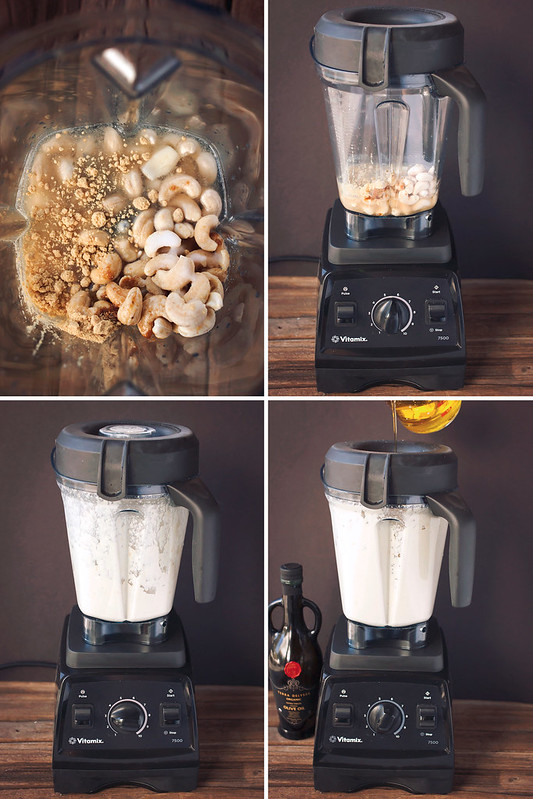
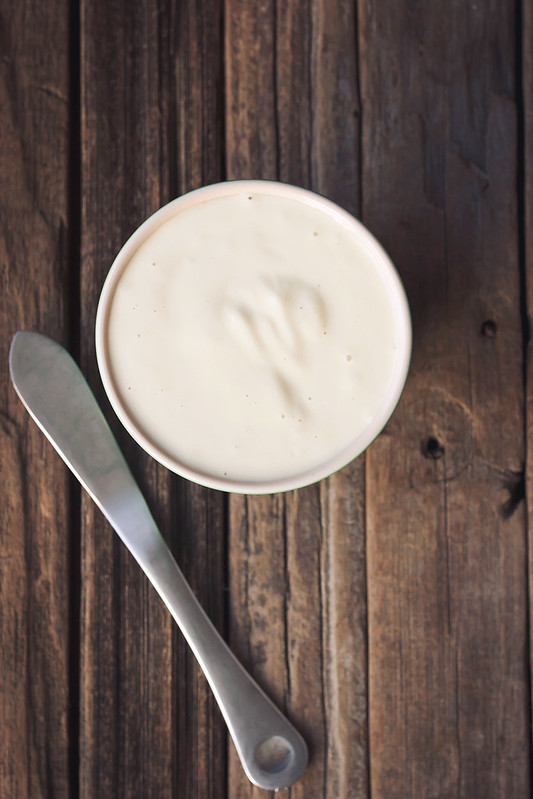
With all of my current restrictions on this elimination diet, plus my already existing intolerances and dietary choices, I have to be honest and tell you it’s been a challenging 2 weeks. I have found in my current state, even without meat, eggs and dairy, legumes are simply not agreeing with me, likely the leaky gut I was diagnosed with at the first appointment. I work hard to limit my intake of grains on a daily basis, I avoid soy and of course, we all know I can’t have gluten and I don’t eat processed foods – so as you can imagine I have been working really hard to rethink my meals and meal planning, to rethink my snacks and I have been looking for protein and healthy fats in new places. Some days it feels easy and I am simply focused on the other side and what I am working so hard for, and other days, you may just find me in the corner of the kitchen crying over the egg sandwich my husband is starting his day with. Read the rest of this entry »
-
How-to Make Harissa Paste
I am so excited to share this simple tutorial showing you How-to Make Harissa Paste, because I fully believe everyone should have a jar of this stuff in their fridge at all times. This spicy red pepper paste is so incredibly delicious and so versatile. Think of it as a more refined sriracha. This aromatic and spicy, Tunisian hot chile sauce can be used to liven up dishes as you would any other hot sauce, it can also be used as a dip or a marinade. It brings a great depth of flavor to fish, meat, roasted vegetables, egg dishes, soups, stews, potatoes or rice. Add it to sandwiches, pizza, condiments like hummus or a homemade mayo. The list goes on and on and on some more. OK I’ve got one more, spread some of that harissa paste on some toast, add a lil avocado, maybe a fried egg. You are welcome.
Harissa is made by blending chiles into a thick paste with aromatic spices, a good quality olive oil, garlic, lemon juice and from there, the optional add-ins are endless. You can add roasted red pepper, roasted carrots or sun dried tomatoes, fresh herbs and so on.
Tunisia is the biggest exporter of pre-made harissa. In fact, harissa is often referred to as the National Condiment of Tunisia, so it’s perfect to go with my Terra Delyssa Organic Extra Virgin Olive Oil. But, no need to fly halfway around the world, for either one, harissa is quite simple to make this at home and customize it to your liking. You can easily adjust the level of heat by increasing or reducing the number of chiles or choosing chiles base on their spice. But do remember, harissa is meant to be hot!
Tag Archives: make
-
How-to Make All Purpose Cleaner
It’s easy to walk down the aisles at the market and get sucked into the varying claims of cleaning products. Afterall, we want to protect ourselves and our families from all the nasty stuff, the dirt, germs and bacteria. When you see this simple recipe for making your own all purpose cleaner you may think ‘is this enough to disinfect? What about those store bought version with tons of ingredients and chemicals, don’t we need those to make sure we are killing off bad bacteria?’
To be honest with you, the long list of toxic chemicals filling the cleaning products at the store, are likely causing us far more harm then good. Just click into this list and peruse the posts on any of these disinfecting all-purpose cleaners and read the long lists of health and safety concerns on each. It’s alarming at best. Skin irritants, carcinogens, eye irritants, poison if swallowed, some if just inhaled. YIKES! We use this stuff day in and day out around our house, near our children and our pets. This is scary stuff.
Much like making your own food from scratch, the wonderful thing about making your own household cleaning products is the opportunity to know exactly what’s in it. We use most all purpose spray cleaners throughout our houses, several times a week, if not per day. It comes in contact with our skin, it’s in the air that we breath and it’s around our food, why shouldn’t you know exactly what it contains?
The beauty of this simple homemade all-purpose clearer is how we use all-natural, high quality 100% therapeutic grade essential oils for their natural disinfecting properties. All essential oils have varying natural antibacterial, antifungal & antiviral qualities, some stronger than others.

